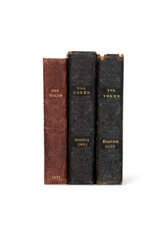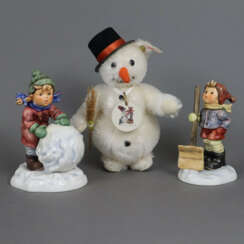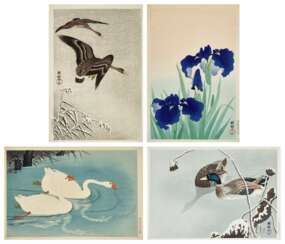first snow

John Greenleaf Whittier was an American poet, essayist, and member of the American Anti-Slavery Society.
Whittier devoted 30 years of his life to the fight against slavery. Only after the Civil War, already at a mature age, he was finally able to engage in his favorite pastime - poetry. Past his fascination with Burns, Whittier became an eloquent advocate of justice, tolerance, and liberal humanism. He has been called "America's finest religious poet" for the high spiritual and moral values he extolled, and many of his poems are still sung as church hymns.
Whittier also wrote about the region's past, about life in New England before industrialization. In late nineteenth-century America, Whittier was second only to Henry Wadsworth Longfellow in popularity. His most famous poem, "Bound by Snow," was published in 1866. Whittier was also a longtime editor of the New England Weekly Review.


Nathaniel Hawthorne is an American writer and author.
Hawthorne is a recognized short story writer and a master of allegorical and symbolic narrative. One of the first fiction writers in American literature, he is best known for his works The Scarlet Letter (1850) and The House of Seven Gables (1851). Hawthorne's artistic works are considered part of the American Romantic movement and, in particular, of so-called dark Romanticism, a popular mid-19th-century fascination with the irrational, the demonic, and the grotesque.


Nathaniel Hawthorne is an American writer and author.
Hawthorne is a recognized short story writer and a master of allegorical and symbolic narrative. One of the first fiction writers in American literature, he is best known for his works The Scarlet Letter (1850) and The House of Seven Gables (1851). Hawthorne's artistic works are considered part of the American Romantic movement and, in particular, of so-called dark Romanticism, a popular mid-19th-century fascination with the irrational, the demonic, and the grotesque.


John Greenleaf Whittier was an American poet, essayist, and member of the American Anti-Slavery Society.
Whittier devoted 30 years of his life to the fight against slavery. Only after the Civil War, already at a mature age, he was finally able to engage in his favorite pastime - poetry. Past his fascination with Burns, Whittier became an eloquent advocate of justice, tolerance, and liberal humanism. He has been called "America's finest religious poet" for the high spiritual and moral values he extolled, and many of his poems are still sung as church hymns.
Whittier also wrote about the region's past, about life in New England before industrialization. In late nineteenth-century America, Whittier was second only to Henry Wadsworth Longfellow in popularity. His most famous poem, "Bound by Snow," was published in 1866. Whittier was also a longtime editor of the New England Weekly Review.


Nathaniel Hawthorne is an American writer and author.
Hawthorne is a recognized short story writer and a master of allegorical and symbolic narrative. One of the first fiction writers in American literature, he is best known for his works The Scarlet Letter (1850) and The House of Seven Gables (1851). Hawthorne's artistic works are considered part of the American Romantic movement and, in particular, of so-called dark Romanticism, a popular mid-19th-century fascination with the irrational, the demonic, and the grotesque.








Arthur John Elsley was an English painter of the late Victorian and Edwardian periods, famous for his idyllic genre scenes of playful children and their pets. He achieved great popularity during his life and much of his work appeared in calendars, magazines and books.


Pierre Soulages was a French painter, printmaker, and sculptor. In 2014, François Hollande described him as "the world's greatest living artist."
Soulages is known as "the painter of black," owing to his interest in the colour "both as a colour and a non-colour. When light is reflected on black, it transforms and transmutes it. It opens a mental field all its own." He saw light as a work material; striations of the black surface of his paintings enable him to reflect light, allowing the black to come out of darkness and into brightness, thus becoming a luminous colour.



























![William Simpson | The seat of the war in the East [first and second series]. London, 1855-1856, 2 volumes, deluxe hand-coloured edition](/assets/image/picture_3553114/1f25a/lpwgbzlbdjeizge5qgkdwkegipzhw9zqdtyv4jqwbm2xkfgtdbwgohjts8wvy5y21699098650jpg__fix_374_244.jpeg)
![William Simpson | The seat of the war in the East [first and second series]. London, 1855-1856, 2 volumes, deluxe hand-coloured edition](https://veryimportantlot.com/assets/image/picture_3553114/1f25a/lpwgbzlbdjeizge5qgkdwkegipzhw9zqdtyv4jqwbm2xkfgtdbwgohjts8wvy5y21699098650jpg__fix_374_244.jpeg)















































